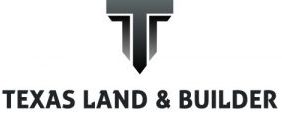As the demand for energy-efficient homes grows, green building techniques are becoming increasingly popular in residential construction. These methods not only help reduce a home’s environmental impact but can also lead to long-term cost savings through improved energy efficiency. In this article, we will explore several key green building techniques, including spray foam insulation, tankless water heaters, cool roofing, solar panels, geothermal HVAC, and energy-efficient windows, and discuss how they contribute to a sustainable home.
1. Spray Foam Insulation
Spray foam insulation is a high-performance insulation material that expands upon application to fill cracks and gaps in walls, attics, and crawl spaces. Its air-sealing properties prevent air leakage, making it significantly more efficient than traditional fiberglass or cellulose insulation.
- Energy Savings: By creating an airtight seal, spray foam reduces the workload on heating and cooling systems, leading to lower energy bills.
- Durability: Spray foam lasts longer than traditional insulation, maintaining its effectiveness for decades.
- Environmental Impact: It helps minimize energy use, which reduces the home’s overall carbon footprint.
2. Tankless Water Heaters
Tankless water heaters, also known as on-demand water heaters, heat water only when needed, eliminating the energy waste associated with storing hot water in traditional tank heaters.
- Energy Efficiency: Tankless water heaters can be up to 30% more energy-efficient than traditional water heaters.
- Cost Savings: Over time, the reduced energy usage leads to lower utility bills, though tankless systems have a higher upfront cost.
- Longevity: Tankless systems tend to last longer than tank water heaters, providing an additional financial benefit.
3. Cool Roofing
Cool roofing materials are designed to reflect more sunlight and absorb less heat than traditional roofing materials, reducing the amount of heat transferred into the home.
- Energy Reduction: Cool roofs lower the home’s cooling load, especially in hot climates, by keeping interior spaces cooler without overtaxing air conditioning systems.
- Material Options: Reflective coatings, light-colored shingles, and metal roofs with reflective properties are popular choices for cool roofs.
- Environmental Impact: Cool roofs reduce the urban heat island effect, where densely built areas become significantly warmer than their rural surroundings.
4. Solar
Solar panels capture energy from the sun and convert it into electricity that can power your home. By producing renewable energy, solar panels reduce dependence on fossil fuels.
- Energy Independence: Solar panels allow homeowners to generate their own electricity, potentially eliminating or significantly reducing monthly electric bills.
- Incentives: Many states offer tax credits and rebates for solar panel installation, which can offset the high initial investment.
- Long-Term Savings: While the upfront cost is substantial, solar panels often pay for themselves over time through energy savings and government incentives.
5. Geothermal HVAC
Geothermal heating, ventilation, and air conditioning (HVAC) systems use the stable temperatures found underground to heat and cool homes. A geothermal heat pump circulates fluid through underground pipes, exchanging heat with the earth to maintain consistent indoor temperatures.
- Energy Efficiency: Geothermal systems are extremely efficient, using up to 50% less electricity than traditional HVAC systems.
- Sustainability: Geothermal energy is renewable and environmentally friendly, as it reduces reliance on fossil fuels for heating and cooling.
- Initial Costs: While the energy savings are significant, geothermal systems have a high upfront cost, particularly for drilling and installing the underground loop system.
6. Energy-Efficient Windows
Windows are a critical component of a home’s thermal envelope. Energy-efficient windows use features like low-emissivity (Low-E) coatings, multiple panes, and gas fills between panes to reduce heat transfer and improve insulation.
- Lower Utility Bills: By preventing heat gain in the summer and heat loss in the winter, energy-efficient windows can reduce heating and cooling costs.
- Comfort: These windows help maintain more consistent indoor temperatures, making homes more comfortable year-round.
- Environmental Benefits: Improved energy efficiency means reduced energy consumption and a lower carbon footprint.
Green building techniques offer a wide range of benefits, from improving energy efficiency and lowering utility bills to reducing a home’s environmental impact. Some green building methods, such as spray foam insulation, tankless water heaters, and energy-efficient windows, often pay for themselves over time through reduced energy consumption and operational savings. Others, like solar panels and geothermal HVAC systems, have a higher upfront cost but provide significant long-term savings and environmental benefits.
However, not all green techniques are financially accessible for every homeowner. Certain technologies, such as geothermal HVAC or solar panels, can be cost-prohibitive without government incentives or rebates. Despite the initial investment, these systems offer tremendous potential for energy savings and sustainability over the lifespan of the home. Ultimately, the decision to incorporate green building techniques should be based on a balance between upfront costs, long-term savings, and environmental responsibility.
